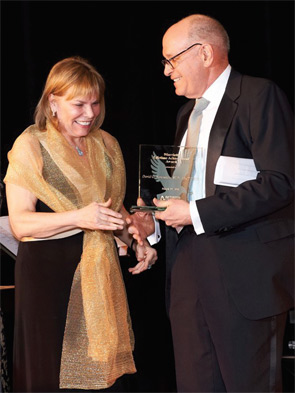Having worked on the ACR’s government affairs committee, Dr. Borenstein says efforts to inform politicians about arthritis is a constant process because legislators come and go but the need for arthritis awareness never changes. Patient involvement empowers patient and physician alike and is key to getting the message heard by those who can make a difference, he says.
“It makes it much easier as an advocate for them as their physician to say that the people with this problem are actively engaged and interested in trying to make their lives better,” says Dr. Borenstein.
Focus on Patients
“Never give up on a patient” is the philosophy Dr. Borenstein lives by, and he says that some patients even return after a decade of absence with new problems, believing that he fixed them once and he can do it again. He jokes that, “the staff knows they should not put my old files too, too far away.”
Somewhat of a doodler, Dr. Borenstein often draws pictures to help patients understand how to handle their back pain. The inspiration for his first book for a lay audience came from one of those patients who suggested he “write it down.”
Heal Your Back: Your Complete Prescription for Preventing, Treating, And Eliminating Back Pain (Rowman & Littlefield Publishers, Inc., 2011), released earlier this year, teaches patients about their back pain and how to manage it. It is Dr. Borenstein’s second book written for the general public; he also authored three medical textbooks for doctors on low back and neck pain.

While no single back-pain therapy works for everyone, research tells us that the musculoskeletal system heals on the move, says Dr. Borenstein. He believes in the necessity of exercise, and in his spare time he likes to play squash. Besides being fun, the racquet sport aptly illustrates a message he repeats often to his patients with back pain: Our bodies were made to move.
“We’re not made to be sitting on our behinds so much,” he says, echoing what he frequently reminds patients. “I say, ‘Get up. Get up!’ That’s what I tell them.”
Magnetism of Medicine
On his way to becoming a chemist as an undergraduate, Dr. Borenstein changed courses after a brief but enlightening chat with his older brother, also a doctor. “My older brother wanted to be a doctor as long as I knew him … and because of that I didn’t want to be a doctor,” he explains.
